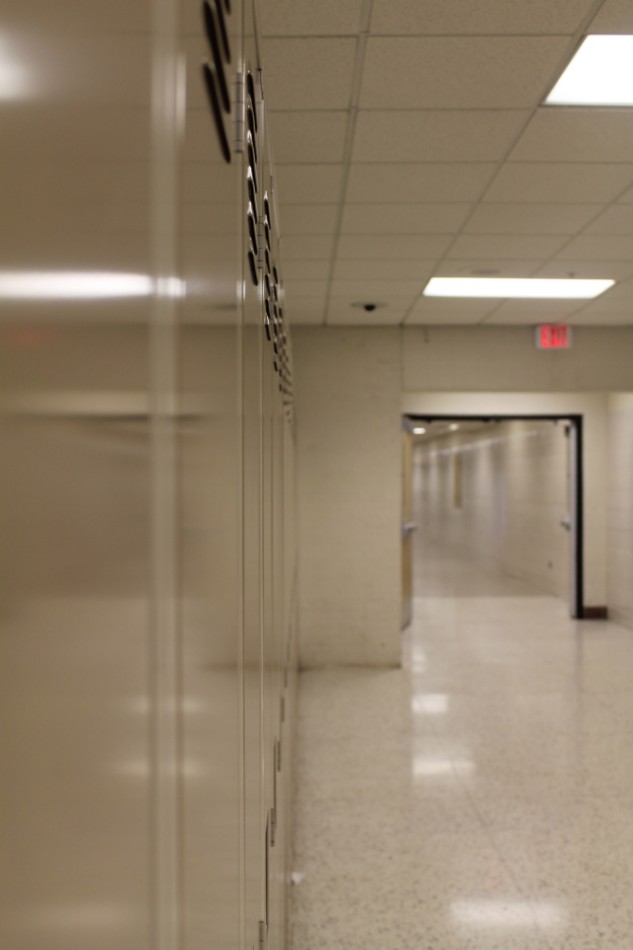My Mind Is Colored, The World Is Colored, And So Should School
CF hallways are sterile looking
The grass is green. The sun is yellow. Roses are red and violets are blue. Every object, being, and place in this world is decorated with color. Without color people would live in a monotonous environment. It would be dull and boring. At Cannon Falls High School the walls, classrooms, and lessons are dressed in such shades of dreariness. Walk down the hallways and not one locker or wall will depict a color. The walls are white and the lockers have the pigmentation of a mushed banana. The classrooms aren’t much better. To intensify students’ learning ability and desire, schools should incorporate color into the classroom. As of now, CFHS lacks the qualities to invite a student to be creative or enhance memory due to its strict neutral coloring.
Color has the ability to affect mood. Red can be associated with desire, yellow as creative, blue as intelligent. With such positive qualities influencing people’s minds, it’s beneficial to add pigments in the classroom. Yet CFHS subjects itself to only using colors associated with being plain and boring – such as white and brown. In the Malaysian Journal of Medical Science, it portrays that “colour has been found to influence memory performance by increasing our attentional level.”
If that’s true, teachers should add color to lesson plans. CFHS math teacher, Mrs. Biron, does so by making her students write formulas on colored paper. This increases memorization and allows students to identify methods needed for assignments. Thus, at test time the student has the ability to draw from memory what formulas are needed to complete a problem. Mail Online reported that recalling information was swifter if it wasn’t presented in a black and white format. Using colored paper is a small solution, but provides benefits of productivity and fun.
High school environments differ from elementary schools. Interior designs of elementaries use color to help youngsters understand different parts of the classroom; such as blue bean bags for reading, and the red table for arts and crafts. CFHS should take notes and add these “childish” colors to the walls of the school. Not only will it stimulate the kid inside all the zombie teenagers, but it will make students want to attend class. Randy Fielding, founder of designshare.com and chairman of Fielding Nair International, a Minneapolis planning and design firm specializing in education environments, reveals that monotonous classrooms actually increase absences among students. Kids aren’t showing up because they are bored and uninterested. However, people can’t blame them when the walls are echoing the same response.
Rooms influence emotions. Amee Maghani, who is apart of Smith System, a manufacturer of products that promote healthy educational environments, tells that interior designers have been using color to set a room’s mood for a long time. However, the CFHS interior has the mood of a bug on a windshield. Even the art room, which is suppose to be where students can let their creativity run free, has the vibe of a funeral. Generally, classrooms’ decor and colors are based on functionality and durability. Schools avoid light colors because they show dirt and rough up quickly. Even if that’s so, it doesn’t make an excuse for the lack of colors. There are different shades, types of paint, and furniture that can withstand abuse. As for price, there’s about a two dollar difference between white and colored paint, yet schools choose to be lackluster. In preschool, when the walls and furniture were decorated in pops of color, kids’ had major mental development. As children get older, they are to turn away because of expected maturity levels when really color influences behavior and motivation to learn.
Incorporating color even in the slightest way has major improvements to education. Students are interested, have better memorization, and higher attendance. Schools in Australia are spending lots of money to create environments called “learning spaces”. Lots of money is spent on furniture, wall color, and lighting. They’re doing this so kids feel like they can take more risks in learning. In CFHS and other schools, students deal with the same lifeless environment. Instead of being like a beehive buzzing with activity, is a slow moving zoo with no interest in learning. By bringing in even the slightest bit of color, motivation could greatly increase. Mrs. Biron’s technique is a small step that can be incorporated easily. Adding color to the school could leave students saying the walls are green, lockers are yellow, and the desks are red.

Madeline is a senior and is involved in NHS, Excel, Soccer and Softball. She enjoys running, walking her dog, painting, drawing, Netflix, eating, cooking,...

Mary is a writer and photographer for the Lantern. She is involved with musicals, one-act plays and the speech team.

